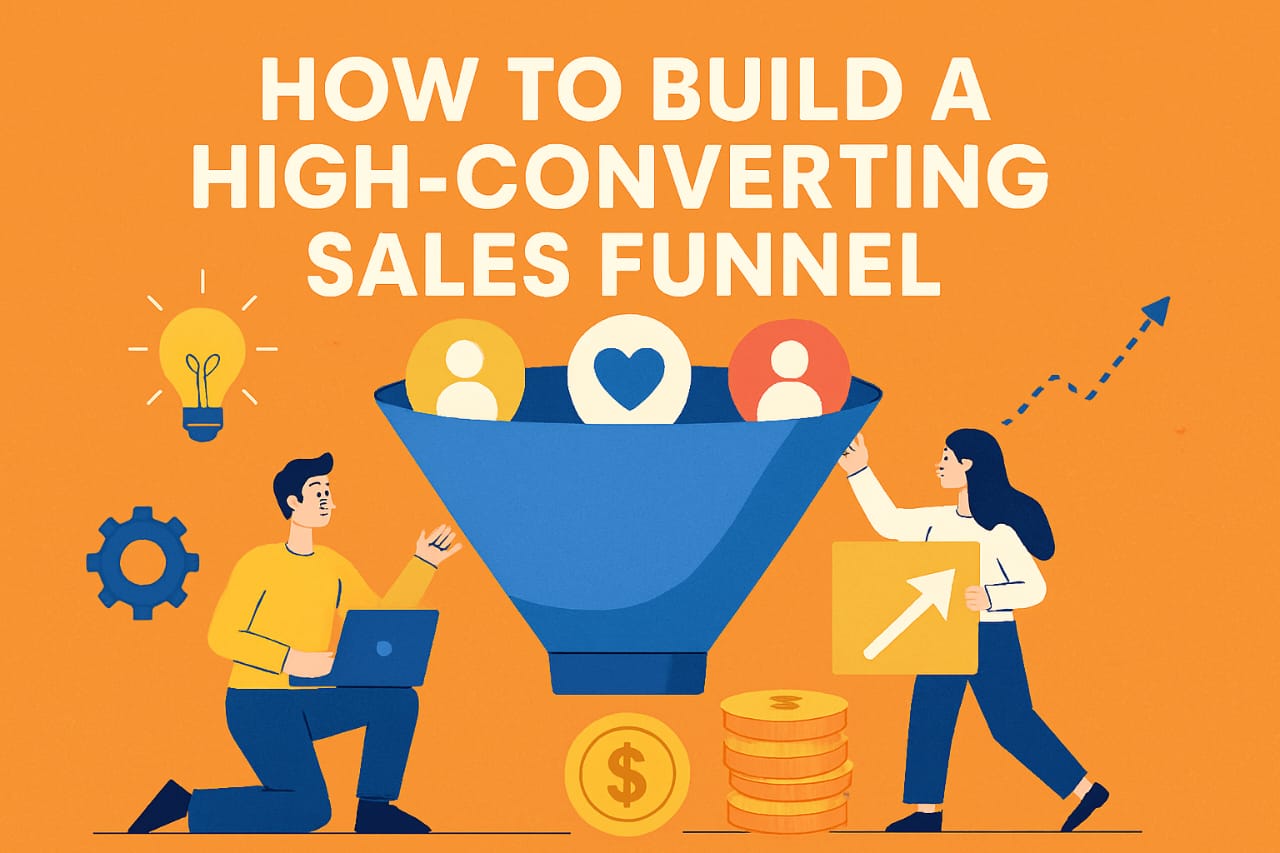
Understanding the Sales Funnel
In online marketing, a sales funnel is the path a prospective customer follows from initially learning about your brand to ultimately making a purchase. A well-crafted sales funnel can convert casual visitors into repeat customers. In this blog, we will guide you through the most important steps to create a high-converting sales funnel that actually delivers results.
Step 1: Attract the Right Audience
The awareness stage is the first phase of your funnel. You want to get the right people on your website or landing page. This can be achieved through:
- Social media marketing
- SEO (Search Engine Optimization)
- Paid advertising (Google Ads, Facebook Ads, etc.)
- Blogging and content marketing
At this phase, you do not aim to sell, but to attract attention and provide something valuable that people will be interested in learning more about.
Step 2: Provide Value with a Lead Magnet
After the person has visited your site, you must get their information—typically their email address. In order to do so, provide something of value in return. This may be:
- A free guide or eBook
- A coupon discount
- A free trial offer
- A special video or webinar
This is a lead magnet. It assists you with converting visitors into leads by providing them with a motive to remain in touch with your brand.
Step 3: Establish Trust by Nurturing
Having their contact information, it’s now time to establish a relationship. Utilize email marketing to send them useful, pertinent information. Send tips, how-to’s, and success stories about your product or service. This engages your audience and establishes trust over time.
Don’t go for the sale right away. Rather, educate and assist your leads in solving their issues.
Step 4: Create an Irresistible Offer
After your leads trust your brand, it’s time to make your offer. This is your opportunity to showcase your product or service as the ideal solution to their problem.
Ensure your offer is clear and compelling. Emphasize benefits, add testimonials or case studies, and utilize urgency (such as limited-time offers) to prompt action.
Step 5: Streamline the Conversion Process
Small tweaks to your sales funnel can produce improved outcomes. Experiment with various aspects such as:
- Headline and button copy
- Images and color schemes
- Call-to-action (CTA) position
- Checkout process
With A/B testing software, discover what works best. Make it as simple as possible for the customer to say “yes.”
Step 6: Follow Up and Retain
After the sale, your funnel isn’t over. Send thank-you emails, offer support, and ask for feedback. A happy customer can become a repeat buyer and even refer others to your business.
Conclusion
A high-converting sales funnel is not something that happens overnight. It requires time, testing, and ongoing improvement. But when you finally get it right, it can transform your website into a money-making machine that works for you 24/7. Concentrate on learning about your customer’s journey, offer real value at every step, and you will find your conversions increasing.
